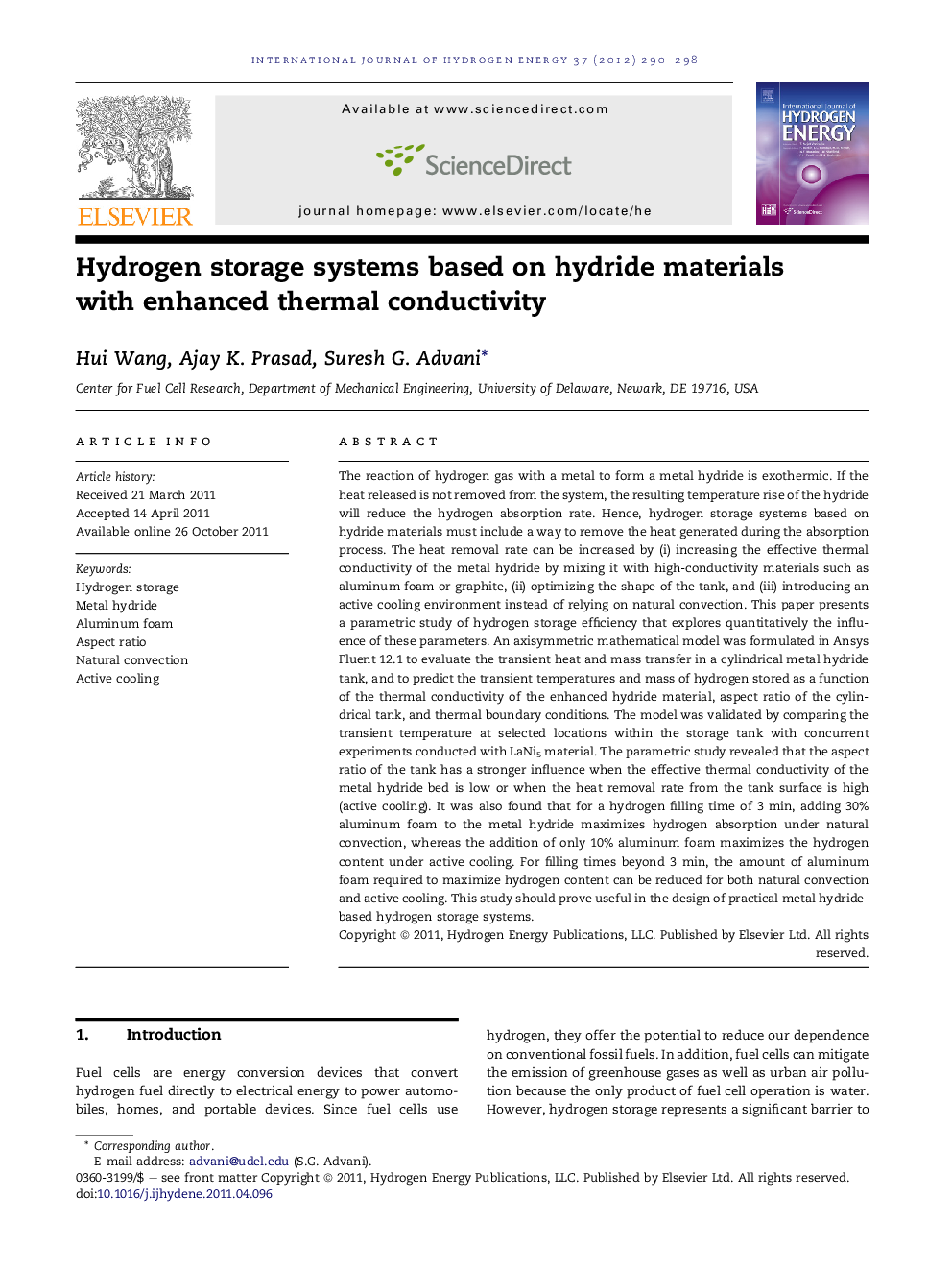| Article ID | Journal | Published Year | Pages | File Type |
|---|---|---|---|---|
| 1277143 | International Journal of Hydrogen Energy | 2012 | 9 Pages |
The reaction of hydrogen gas with a metal to form a metal hydride is exothermic. If the heat released is not removed from the system, the resulting temperature rise of the hydride will reduce the hydrogen absorption rate. Hence, hydrogen storage systems based on hydride materials must include a way to remove the heat generated during the absorption process. The heat removal rate can be increased by (i) increasing the effective thermal conductivity of the metal hydride by mixing it with high-conductivity materials such as aluminum foam or graphite, (ii) optimizing the shape of the tank, and (iii) introducing an active cooling environment instead of relying on natural convection. This paper presents a parametric study of hydrogen storage efficiency that explores quantitatively the influence of these parameters. An axisymmetric mathematical model was formulated in Ansys Fluent 12.1 to evaluate the transient heat and mass transfer in a cylindrical metal hydride tank, and to predict the transient temperatures and mass of hydrogen stored as a function of the thermal conductivity of the enhanced hydride material, aspect ratio of the cylindrical tank, and thermal boundary conditions. The model was validated by comparing the transient temperature at selected locations within the storage tank with concurrent experiments conducted with LaNi5 material. The parametric study revealed that the aspect ratio of the tank has a stronger influence when the effective thermal conductivity of the metal hydride bed is low or when the heat removal rate from the tank surface is high (active cooling). It was also found that for a hydrogen filling time of 3 min, adding 30% aluminum foam to the metal hydride maximizes hydrogen absorption under natural convection, whereas the addition of only 10% aluminum foam maximizes the hydrogen content under active cooling. For filling times beyond 3 min, the amount of aluminum foam required to maximize hydrogen content can be reduced for both natural convection and active cooling. This study should prove useful in the design of practical metal hydride-based hydrogen storage systems.
► Model to predict hydrogen storage in metal hydride cylindrical tank with Al foam is presented. ► A study is conducted to evaluate the influence of various parameters on the hydrogen storage rate. ► The tank aspect ratio has a strong effect on the filling rate with less aluminum foam in the tank. ► For natural convection case, Al foam of ∼30% is required to maximize hydrogen absorption. ► For the active cooling case, less aluminum foam (∼10%) is sufficient to maximize hydrogen storage.
